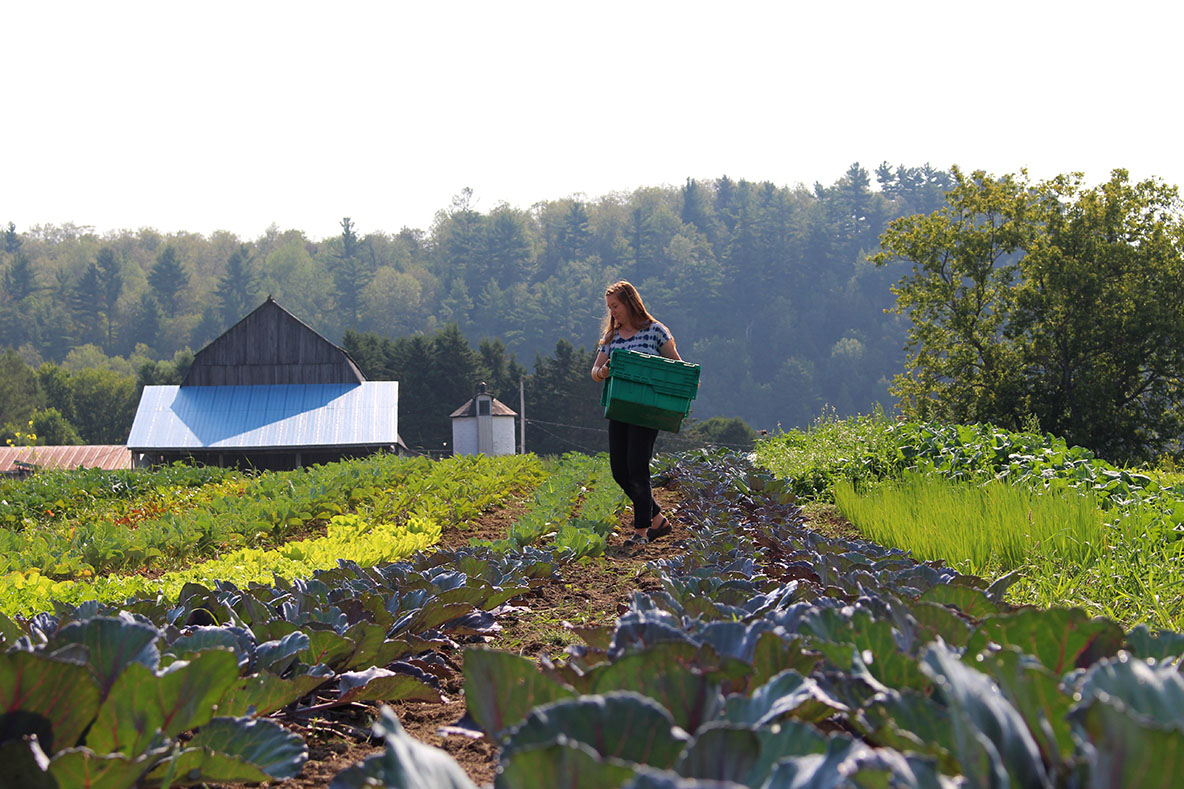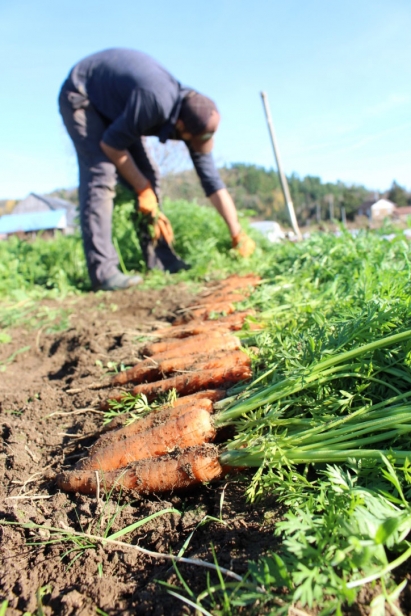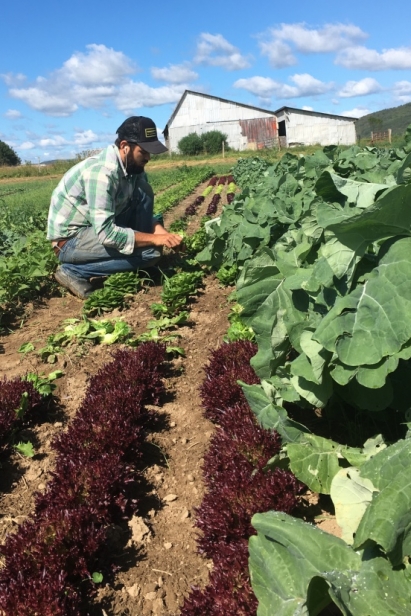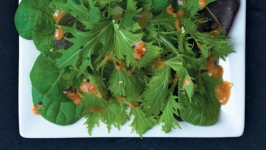Farming the Dirt
Good food is all about good dirt. Honestly. To grow fruits and vegetables that pack a flavourful punch — you know the ones, the oh-so-sweet carrots and crunchy beans that make your taste buds sing — you need really good dirt. That means dirt that’s dark and rich, moist, but well drained, packed with microbes, bacteria and nutrients, a living, breathing thing in itself.
You can have all the sunshine you need and plenty of rainfall, but if the soil is out of balance, poor and lacking in nutrients, the plant that grows in it will be, too. And if the plant is poor and miserable, then the vegetables it produces won’t be up to much.
It seems like a pretty simple equation: good soil plus good sunshine plus plenty of water equals happy plants. And happy plants equal tasty, nutrient-filled vegetables. However, soil science is not so simple, not least if you aim to put more back into it than you take from it, to farm in a sustainable way.
“The soil is as important to growing food as a fork is in getting it to your mouth,” says Stuart Oke, co-owner of Rooted Oak Farm (rootedoak.ca) near Saint-André-Avellin, to the east of Gatineau.
“We are trying to leave the soil in a better state than when we found it,” says Oke, and for that to be the case, “diversity of nutrients is the most important thing, and you must feed the soil, not the crop.”
Oke, who farms three acres with his business and life partner Nikki Tesar, works co-operatively with his neighbouring farm, Grazing Days. “We use a lot of compost and manure,” he says, “and we get ethically pasture-raised manure from next door.”
But compost and manure are not enough alone to feed the soil when nutrient-sucking vegetables move out.
Oke tests his soil to get a more detailed picture, then he consults the brain trust of veteran farmers he has worked with over the years, and the Ecological Farmers Association of Ontario. “Deficiency has many variables and it’s important to remember that this is a marathon not a sprint. Micronutrients make a huge difference,” he explains. “A lack of phosphorus may make it difficult to grow good brassicas, such as kale and broccoli. Or often soil is magnesium deficient or its pH is out of balance. These things are adjusted slowly, over a three to five-year-period.”
Oke, who is now 27 and has been farming since he was 18, and Tesar, 25, who studied ecosystem management at Fleming College, have just finished their first season working the land at Rooted Oak, where they grew 30 different crops. They started out fully aware that there would be problems.
“The reality of growing vegetables is that you are going to be starting on land that is not ideal,” he explains. “Our carrots, greens and spinach were excellent,” Oke says. “Recently a customer told us he’d done a taste test on spinach and that ours was by far the deepest green, crispiest and best tasting. But our beets and broccoli, with slowly maturing and underdeveloped fruit and roots, were not great. They had clear signs of phosphorus deficiency with possible impact from low magnesium too. We've spread calcium phosphate and dolomitic lime to address those deficiencies and bring the pH closer to 6.8 to 7 on the scale.”
Oke and Tesar will divide their land on a four-year rotation basis. At any one time, 25 per cent will be under a cover crop such as oilseed radish, peas or buckwheat, otherwise known as a green manure.
“This is a crop you are growing to actively fix a nutrient,” he explains. “Peas are a classic green manure. They fix nitrogen into the soil. The long root of an oilseed radish does what’s called bio-drilling. It accesses deep nutrients in the subsoil and brings them up to the topsoil for use by other plants.”
It also turns out that just as they are in our gut, bacteria are very important in the soil. At a very simple level, good gut bacteria contribute to a healthy immune system; good soil bacteria are important contributors to overall soil health.
“The soil is a living ecosystem, providing everything the plant needs,” explains Zach Loeks, co-owner of Kula Permaculture Farm and the author of The Permaculture Market Garden. “Essentially the plant is the soil. Healthy soil results in plants that grow big and strong. And we must recognize that the soil is not a never-ending bank account. We must invest in our soil.”
Loeks, like Oke, digs in plenty of organic matter such as manure and compost. He uses cover crops and hay mulch, and one of his most important pieces of advice is, “don’t over-till the soil. Over-tilling and leaving the soil bare over the winter destroys the ecosystem. You must protect your soil, preferably using a cover crop.” Some cover crops such as oats are winter killed and should be planted early in the fall following summer vegetables, he explains, while others survive the cold, like winter rye, and can follow late summer vegetables such as squash.
Crop rotation is another important aspect to consider for soil, as it helps prevent infestations and soil-borne diseases. It can also help with soil health by not repetitively draining nutrients. “With crop rotations, gardeners should try and move their crops around their garden. Generally it’s better not to plant the same crop in the same spot year to year as this can cause soil-borne diseases within that plant family,” Oke advises.
Finally, it seems tea makes everyone happy — even the earth. Oke makes batches of compost tea, which he sprays on the foliage of a cover crop or directly onto the soil to stimulate pre-existing microbes. This tea could be made of worm castings, compost, molasses — the sugar helps feed the microbes — all mixed up with water.
Once you’ve put all this love into the soil, how do you know it’s working? Oke has a test for that too. He uses a refractometer to measure Brix (sugar) levels in any vegetable that makes juice. He tests several times throughout the season and happy, healthy plants produce high sugar levels.
Another way to do this is to simply pull a carrot or pluck a pea, give it a quick rinse under the hose and taste for the crisp explosion of flavour. And unless you scrub it, you’ll be getting a bit of dirt with your food as an added bonus. Not to worry — there are plenty of scientific studies to prove that dirt in your diet is good for you on many levels.
Good dirt keeps you, and your vegetables, happy and healthy.









